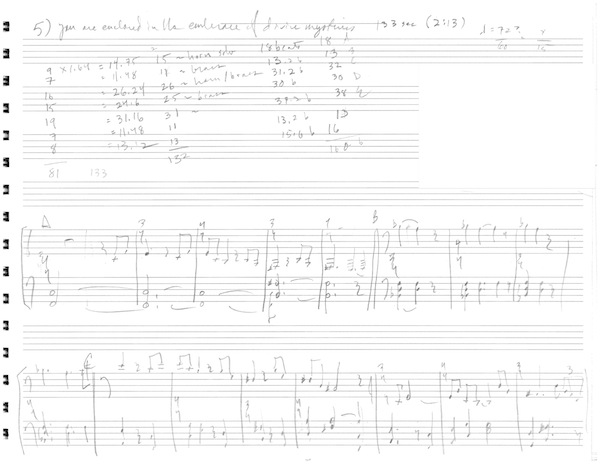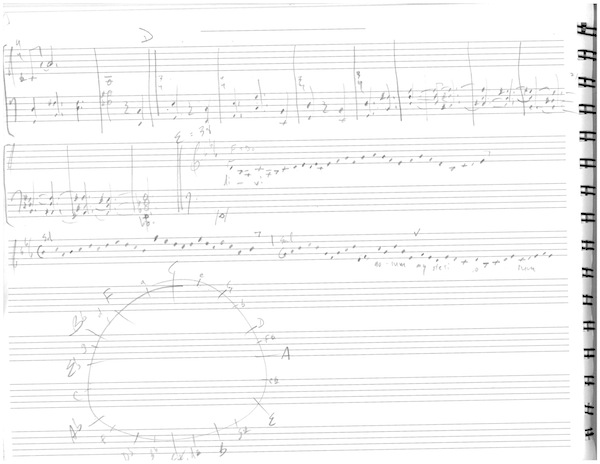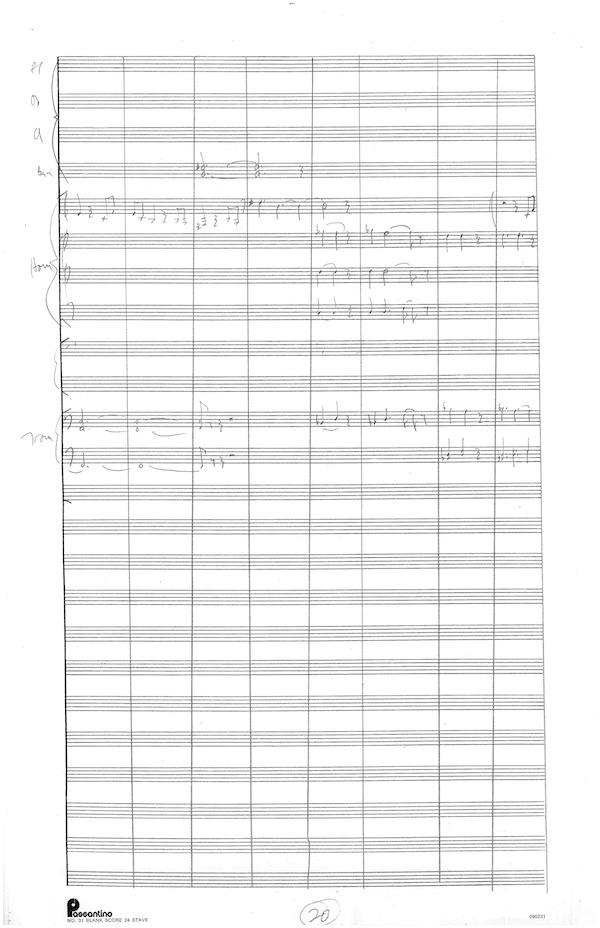“You are enclosed in the embrace of divine mysteries”
It’s been over two months since I last updated this blog, but that’s not because I haven’t been busy! Personally, it’s been a time of transition, with the end of the spring semester at Luther, my wife’s pregnancy with our second child, and our decision to move to a new house in Decorah. Just a few days after we settled into our new house, I joined three colleagues in Duino, Italy, for the International Music Festival of the Adriatic, which I blogged about here. Now that summer is finally here, I can turn my attention back to O Nobilissima Viriditas.
My last post detailed the composition of section 4 of the piece, focused on the text “that no earthly excellence can comprehend.” The next line in Hildegard’s poem, “you are enclosed in the embrace of divine mysteries,” marks the end of the first section of the poem and also the mid-point, dramatically, of my composition (but not the midpoint in terms of elapsed time). Proportionally, this is the longest single episode in the piece (if you recall, the length of each of the seven sections of the piece is determined by the number of syllables in the corresponding line of Hildegard’s text–this section has 19). It is also the most lyrical, with a clear melody presented by a solo French horn and supporting harmonies derived from the circle of thirds (a favorite compositional device introduced to me 14 years ago by my mentors at the Walden School). In the sketches below, you can see both the melody and the harmonies; in the third phrase (marked E on the second page of the sketch), you’ll see a transcription from Hildegard’s musical setting that forms the basis of my own melody. Essentially, I take Hildegard’s pitches and add my own rhythm and phrasing.




Leave a Reply